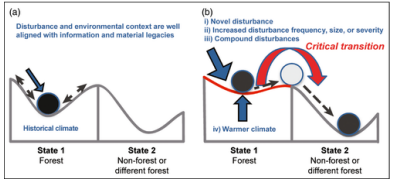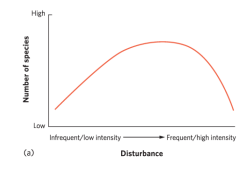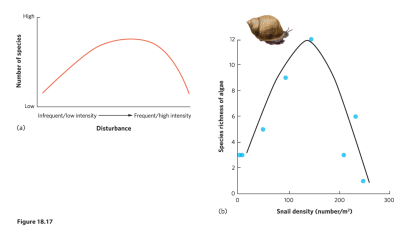25: Community Disturbance
Disturbances
Why disturbances?
changes in the environment
differential effects on populations
might have long-lasting effects
Definition
Disturbance as a factor
a change in environmental conditions that results in changes in the ecosystem
Pickett and White (1985): a disturbance is any relatively discrete event in time that disrupts ecosystem, community, or population structure, and that changes resources, availability of substratum, or the physical environment
Resh et al (1998): frequency and intensity are outside the predictable range
A change in environmental conditions that results in changes in the ecosystem
Pickett and White (1985): A disturbance is any relatively discrete event in time that disrupts ecosystem, community, or population structure, and that changes resources, availability of substratum, or the physical environment
Resh et al. (1988): frequency and intensity are outside the predictable range
Disturbance as a driver
changes in environmental conditions create opportunities for some species
Disturbance as driver of change
forest gaps
control over competitors
Disturbance and community diversity
Global Climate change → Disturbance → Spatial heterogeneity and Biotic interactions (predator-prey, competition, other) → community diversity
Alternative stable states

Intermediate disturbance hypothesis

The hypothesis that more species are present in a community that occasionally experiences disturbances than in a community that experiences frequent or rare disturbances.
Disturbance and biodiversity
Tropics:
tropical forest is not at equilibrium
“If equilibrium is reached, a lesser degree of diversity may be sustained by niche diversification or by a compensatory mortality that favors inferior competitiors”
“tropical forests and reefs are subject to severe disturbances often enough that equilibrium may never be attained”
Intermediate disturbance hypothesis
Forest community example
Bongers et al. (2009). The intermediate disturbance hypothesis applies to tropical forests, but disturbance contributes little to tree diversity. Ecology letters, 12(8), 798- 805.
Forest in Ghana
2504-1 hectare plots
331,567 trees
DI as the percentage of trees in a plot that belong to the pioneer species.
Bongers et al (2009): Our results generally support the IDH as an explanation of why diversity varies across sites. Species richness is most sensitive in its response to disturbance levels at the drier parts of the rainfall gradient … We conclude that disturbance is less important for species richness patterns in wet tropical rain forests than previously thought.
